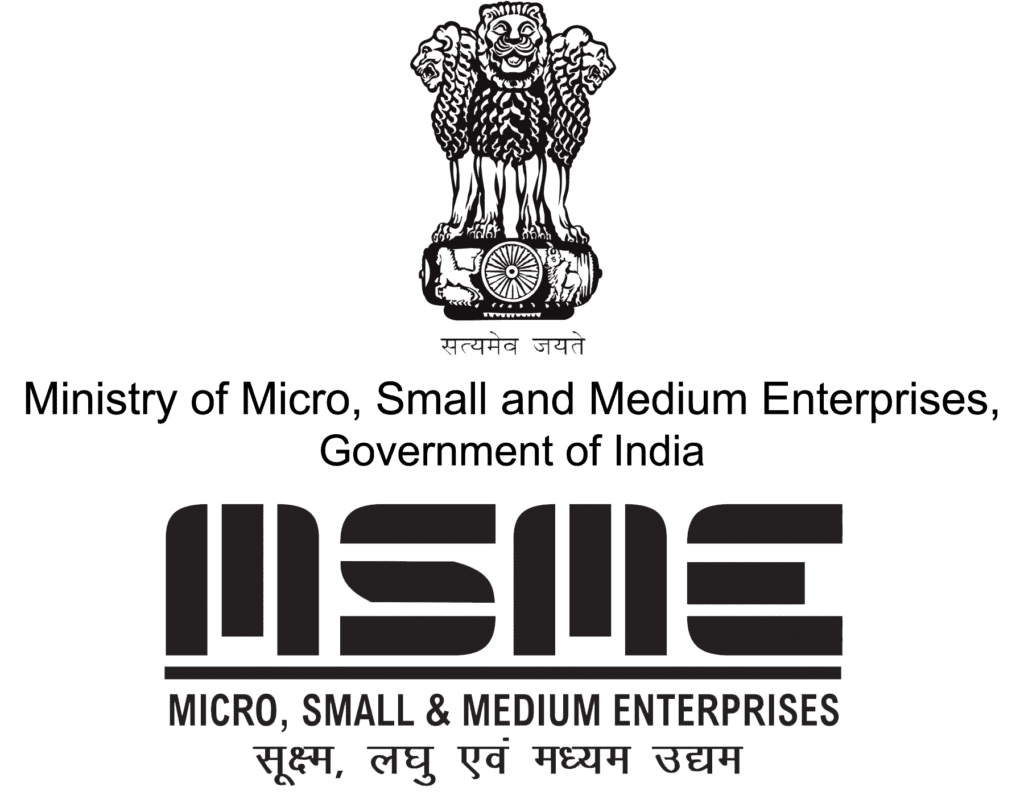The new rule by the Central Bank of Nigeria (CBN) mandating banks to pay a 5% processing fee on all Micro, Small and Medium Enterprises (MSMEs) transactions has sparked a lot of debates and concerns among business owners and industry experts alike. While the CBN claims the new rule is geared towards reducing the cost of financial transactions and improving access to credit facilities for MSMEs, some have raised concerns about the potential economic ripple effects of the policy. In this blog post, we will unpack the new MSME payment rule and analyze its potential impact on the Nigerian economy. We will also discuss the pros and cons of the policy and provide insights on how MSMEs can navigate the new payment rule to their advantage.

1. Introduction to the new MSME payment rule
The recent implementation of the new MSME payment rule has sparked significant discussions and debates across various industries. This rule, which stands for Micro, Small, and Medium Enterprises, aims to address the long-standing issue of delayed payments to these businesses and provide them with a more secure and stable financial environment.
Under this new rule, a specified timeline has been set for larger corporations and government entities to make payments to MSMEs for the goods and services provided. This timeline ensures that the payments are made promptly, preventing the cash flow constraints that many MSMEs have faced in the past. By enforcing timely payments, the rule aims to empower MSMEs, allowing them to grow their businesses, invest in innovation, and effectively contribute to the economy.
The introduction of this new rule comes with several anticipated ripple effects on the economic landscape. Firstly, it is expected to foster a more conducive business environment for MSMEs, enabling them to operate with greater confidence and stability. With a predictable and timely payment system in place, MSMEs can better plan their cash flow, meet their financial obligations, and reinvest in their growth and development.
Moreover, the new MSME payment rule is also expected to have a positive impact on job creation. As MSMEs experience improved financial stability and growth opportunities, they will likely expand their operations and hire more employees. This can lead to a boost in employment rates and contribute to the overall economic prosperity of the nation.
Furthermore, this rule may also encourage entrepreneurship and innovation. With a reduced fear of delayed payments, aspiring entrepreneurs may be more willing to take the leap and start their own MSMEs. This influx of new businesses can bring fresh ideas, competition, and diversity to various sectors, ultimately driving economic growth and development.
However, it is important to consider the potential challenges and adjustments that may arise from implementing the new MSME payment rule. Larger corporations and government entities may need to reevaluate their payment processes, systems, and financial planning to ensure compliance with the set timelines. Additionally, effective monitoring and enforcement mechanisms must be put in place to ensure the rule is followed and to address any potential disputes or non-compliance.
In conclusion, the introduction of the new MSME payment rule marks a significant step towards creating a more inclusive and supportive economic environment. By prioritizing prompt payments to MSMEs, this rule has the potential to unlock their growth potential, drive job creation, and foster a culture of entrepreneurship and innovation. However, careful implementation and ongoing monitoring will be crucial to ensure its effectiveness and long-term sustainability.
2. Understanding the key components of the rule
To fully comprehend the economic ripple effects of the new MSME payment rule, it is crucial to delve into its key components. This rule, designed to support Micro, Small, and Medium Enterprises (MSMEs), aims to address the long-standing issue of delayed payments that have plagued these businesses for years.
Firstly, the rule stipulates a maximum payment timeline that must be adhered to by larger companies when transacting with MSMEs. This ensures that MSMEs receive timely payments for their goods or services, enabling them to manage their cash flow effectively and meet their financial obligations.
Secondly, the rule emphasizes the establishment of a dispute resolution mechanism for any payment-related conflicts that may arise between MSMEs and their larger counterparts. This mechanism aims to provide a fair and efficient process for resolving disputes, promoting a more equitable business environment.
Another key component of the rule is the requirement for larger companies to maintain proper records of their payment transactions with MSMEs. This promotes transparency and accountability, allowing for better monitoring and enforcement of the rule. It also facilitates the collection of data that can be utilized to assess the overall impact of the rule on the MSME sector and the broader economy.
Furthermore, the rule encourages greater awareness and understanding of the rights and responsibilities of both MSMEs and larger companies regarding payment practices. This fosters a culture of fair and ethical business conduct, ultimately contributing to a more sustainable and inclusive economic ecosystem.
By comprehending these key components of the new MSME payment rule, stakeholders can better grasp its potential effects on various aspects of the economy. From improved cash flow management for MSMEs to enhanced business relationships and a more level playing field, this rule has the potential to create lasting positive change for the MSME sector and the economy as a whole.
3. The potential economic impact on MSMEs
The new MSME payment rule has the potential to create significant economic ripple effects, particularly for micro, small, and medium-sized enterprises (MSMEs). These businesses form the backbone of many economies, contributing to job creation, innovation, and overall economic growth.
One of the key aspects of the new payment rule is the requirement for larger enterprises to make timely payments to MSME suppliers. This is a crucial development as delayed payments have long been a challenge faced by MSMEs, leading to cash flow issues, hindered growth, and even business closures.
By ensuring prompt payments, the new rule can alleviate the financial strain on MSMEs and enable them to operate more efficiently. This, in turn, can have a positive impact on their ability to invest in new technologies, expand their operations, and hire additional staff. With increased stability and resources, MSMEs can become more competitive in the market and contribute even more significantly to the local economy.
Furthermore, the economic impact of the new payment rule extends beyond the immediate benefits for MSMEs. As these businesses thrive, they are likely to increase their demand for goods and services from other businesses, thereby stimulating economic activity throughout the supply chain. This multiplier effect can lead to job creation, increased consumer spending, and overall economic growth.
Additionally, the new rule can foster a more conducive business environment for aspiring entrepreneurs. The assurance of timely payments can encourage individuals to take the leap and start their own MSMEs, knowing that they will have a fair chance to succeed and grow.
While it is important to acknowledge that the full economic impact of the new MSME payment rule will depend on its effective implementation and adherence, there is great potential for positive change. By addressing the longstanding issue of delayed payments and supporting the growth of MSMEs, this rule can play a vital role in promoting economic development and resilience at both the local and national levels.
4. How the rule may affect cash flow for MSMEs
The new MSME payment rule is expected to have a significant impact on the cash flow of small and medium-sized enterprises (MSMEs). Cash flow is the lifeblood of any business, and any disruption to it can have serious consequences for the overall financial health and sustainability of the business.
Under the new rule, which requires larger companies to pay their MSME suppliers within a specified time frame, MSMEs are likely to experience improved cash flow. The timely receipt of payments will enable these businesses to meet their own financial obligations more efficiently, such as paying their employees, purchasing inventory, and investing in growth opportunities.
This improved cash flow can have several positive ripple effects on the overall economy. Firstly, MSMEs will have greater confidence and stability, allowing them to expand their operations and hire more employees. This, in turn, leads to job creation and economic growth. Additionally, when MSMEs have more financial resources at their disposal, they are more likely to invest in innovation, research and development, and technology upgrades, which can enhance their competitiveness in the market.
On the other hand, larger companies may face challenges in adjusting to the new payment terms. They may need to reevaluate their own cash flow management strategies to ensure they can meet the payment deadlines without negatively impacting their own operations. This could include implementing more efficient payment processes, negotiating extended payment terms with their own suppliers, or exploring alternative financing options.
Overall, the new MSME payment rule has the potential to create a more balanced and equitable business environment, where MSMEs can thrive and contribute to economic growth. By improving cash flow for these small businesses, the ripple effects can extend beyond their immediate operations, benefiting the larger economy as a whole.
5. Analyzing the implications for suppliers and vendors
The implementation of the new MSME payment rule has far-reaching implications for suppliers and vendors in various industries. As businesses adjust to the new regulations, it is crucial to analyze the potential economic ripple effects that may arise.
For suppliers, the new payment rule could have both positive and negative consequences. On the one hand, the rule aims to ensure prompt payment to MSMEs, which can provide suppliers with a more stable cash flow and reduce the risk of late or non-payment. This can improve their financial stability and enable them to invest in further growth and development.
On the other hand, suppliers may need to adjust their own payment terms and cash flow management to accommodate the prompt payment requirement. This could potentially strain their own financial resources, especially if they rely on longer payment terms from their own customers. Additionally, suppliers may face increased competition as MSMEs become more attractive partners due to the guaranteed timely payments.
For vendors, the implications of the new payment rule may also be significant. Vendors who supply goods or services to MSMEs may benefit from the increased financial stability of their customers. Prompt payment from MSMEs can reduce the risk of payment delays or defaults, improving the vendor’s cash flow and reducing the need for extensive credit control measures.
However, vendors may also face challenges in adjusting their own payment terms and pricing structures to align with the new requirements. They may need to assess the potential impact on their profit margins and explore ways to mitigate any negative effects. Additionally, vendors who primarily work with larger businesses may need to evaluate their strategies and consider expanding their clientele to include more MSMEs.
Overall, the new MSME payment rule presents both opportunities and challenges for suppliers and vendors alike. Careful analysis and adaptation will be crucial to navigate the changing landscape and leverage the potential benefits while mitigating any potential risks.

6. The ripple effects on employment and job creation
The new MSME payment rule has significant ripple effects on employment and job creation. As micro, small, and medium-sized enterprises (MSMEs) are often major contributors to job opportunities, any changes in their financial stability can have a profound impact on the labor market.
With the implementation of the new payment rule, which mandates timely payments to MSMEs by larger corporations, it is expected that the cash flow of these smaller businesses will improve. This, in turn, can lead to increased business growth and expansion, resulting in the creation of new job opportunities.
When MSMEs receive timely payments, they are better equipped to manage their daily operations, invest in new technologies, and explore new markets. This increased financial stability allows them to expand their production capacity and hire additional employees to meet growing demands.
Moreover, the ripple effects of job creation extend beyond the MSME sector itself. As these businesses thrive and expand, they often rely on a network of suppliers and service providers. This means that the positive impact on employment extends to these supporting industries as well, creating a multiplier effect on job creation.
Furthermore, the new payment rule can also foster a more favorable business environment, encouraging entrepreneurs to start their own MSMEs. Knowing that they will have a better chance of receiving timely payments, aspiring business owners may be more inclined to take the leap and contribute to the economy by creating their own ventures.
The overall effect of the new MSME payment rule on employment and job creation is expected to be significant. By ensuring that MSMEs receive timely payments and fostering a favorable business environment, this rule can help spur economic growth, reduce unemployment rates, and contribute to the overall well-being of the economy.

7. Examining the impact on consumer spending
Examining the impact on consumer spending is crucial when unpacking the economic ripple effects of the new MSME payment rule. The rule, which aims to promote timely payments to Micro, Small, and Medium Enterprises (MSMEs), has the potential to significantly influence the behavior of consumers in the market.
One key aspect to consider is the potential increase in prices of goods and services. MSMEs, being the backbone of many economies, often operate on thin profit margins. Delayed payments can have a severe impact on their cash flow, leading to challenges in meeting their own financial obligations. To mitigate this risk, MSMEs may resort to adjusting their prices, which could result in higher costs for consumers.
Furthermore, the new payment rule may affect consumer purchasing power. If businesses are struggling to receive timely payments, they may reduce their investments in growth initiatives, such as hiring new employees or expanding their offerings. This could lead to slower job creation and wage growth, ultimately impacting the disposable income of consumers. As a result, consumers may become more cautious with their spending, leading to reduced overall consumption.
On the other hand, the implementation of the new MSME payment rule could also have positive effects on consumer spending. By ensuring timely payments to MSMEs, their financial stability can improve. This, in turn, may allow them to invest in innovation, improve product quality, and expand their operations. These enhancements can create a ripple effect in the market, attracting more customers and driving increased consumer spending.
Ultimately, the impact on consumer spending will depend on the effectiveness of the new MSME payment rule and how businesses and consumers adapt to the changes. It will be essential to closely monitor the evolving economic landscape to gauge the full extent of these ripple effects and make informed decisions about future policies and strategies.
8. The role of digital payment platforms in mitigating the effects
Digital payment platforms play a crucial role in mitigating the effects of the new MSME payment rule on the economy. With the transition towards a cashless society, these platforms offer a convenient and efficient way for businesses, especially micro, small, and medium enterprises (MSMEs), to receive and make payments.
One of the primary benefits of digital payment platforms is the speed at which transactions can be processed. Traditional methods of payment, such as cash or checks, often involve manual processes that can be time-consuming and prone to errors. In contrast, digital payment platforms enable instantaneous transfers, allowing MSMEs to receive payments quickly, improving their cash flow and overall financial stability.
Moreover, digital payment platforms offer increased transparency and security. With every transaction being recorded electronically, MSMEs have a clear audit trail, reducing the risk of fraud or disputes. This added layer of security gives businesses and their customers peace of mind, fostering trust and confidence in the payment process.
Additionally, digital payment platforms provide MSMEs with access to a wider customer base. By accepting various payment methods, such as credit cards, mobile payments, or online wallets, businesses can cater to the preferences of their customers. This flexibility not only enhances the customer experience but also opens up opportunities for MSMEs to expand their reach and generate more revenue.
Furthermore, digital payment platforms contribute to the overall digitization of the economy. As more businesses embrace digital transactions, the need for physical cash decreases. This shift towards digital payments reduces the costs associated with handling cash, such as printing, transportation, and security. It also promotes financial inclusion, as individuals without access to traditional banking services can utilize digital payment platforms to participate in economic activities.
In conclusion, digital payment platforms play a pivotal role in mitigating the effects of the new MSME payment rule. They streamline transactions, enhance security, expand customer reach, and contribute to the digitization of the economy. As MSMEs embrace these platforms, they can navigate the evolving payment landscape with greater ease and resilience, ultimately driving economic growth and stability.
9. Government initiatives to support MSMEs during the transition
As the new MSME payment rule takes effect, governments around the world are recognizing the need to support micro, small, and medium enterprises (MSMEs) during this transition period. These initiatives aim to alleviate the potential economic ripple effects that could arise from the implementation of the new payment rule.
One of the key government initiatives is the provision of financial assistance and grants specifically tailored for MSMEs. This can include low-interest loans, subsidies, and grants that help MSMEs bridge any financial gaps and adapt to the changes brought about by the new payment rule. By providing financial support, governments aim to ensure that MSMEs have the necessary resources to continue their operations and thrive in the new economic landscape.
Furthermore, governments are also implementing capacity-building programs and training opportunities for MSMEs. These programs equip entrepreneurs and business owners with the knowledge and skills needed to navigate the challenges posed by the new payment rule. Workshops, seminars, and mentorship programs are organized to provide MSMEs with valuable insights on managing cash flow, adopting digital payment systems, and optimizing their business processes.
In addition to financial assistance and capacity-building programs, governments are also exploring policy reforms to create a conducive business environment for MSMEs. This includes streamlining bureaucratic processes, reducing regulatory burdens, and implementing supportive policies that encourage MSME growth. By removing barriers and facilitating ease of doing business, governments aim to foster a thriving MSME sector that can contribute significantly to the overall economy.
These government initiatives highlight a commitment to supporting MSMEs during the transition period of the new payment rule. By providing financial assistance, capacity-building programs, and policy reforms, governments aim to mitigate any potential negative economic ripple effects and ensure the continued success of MSMEs.
10. Conclusion: Navigating the challenges and opportunities of the new payment rule for MSMEs
In conclusion, the new payment rule for MSMEs brings both challenges and opportunities. While it may initially seem burdensome for small businesses to comply with stricter payment terms, it is crucial to view this as an opportunity for growth and development.
Navigating the challenges of the new payment rule requires MSMEs to reassess their financial management practices. Implementing efficient invoicing and payment tracking systems will help businesses stay organized and ensure timely payments. Additionally, exploring alternative financing options, such as invoice financing or factoring, can provide the necessary cash flow to overcome any potential liquidity issues.
Furthermore, MSMEs should use this opportunity to strengthen relationships with their suppliers and customers. Open and transparent communication regarding payment terms will foster trust and collaboration, leading to mutually beneficial partnerships. Embracing digital platforms for payment processing and networking can also streamline operations, improve efficiency, and facilitate smoother transactions.
While there may be short-term disruptions, the new payment rule also presents long-term benefits for MSMEs. By promoting prompt payments, it can enhance the financial stability of small businesses, enabling them to invest in growth initiatives and expand their operations. Moreover, it encourages a level playing field, where all businesses, regardless of size, are treated fairly, reducing the power imbalances often faced by MSMEs.
In summary, successfully navigating the challenges and opportunities of the new payment rule requires MSMEs to adapt and innovate. By implementing efficient financial management systems, fostering strong relationships, and embracing digital solutions, small businesses can thrive in the changing economic landscape. With perseverance and strategic planning, they can turn the ripple effects of the new payment rule into a wave of success.
We hope you found our blog post on the economic ripple effects of the new MSME payment rule insightful. The implementation of this rule has far-reaching consequences that extend beyond the micro, small, and medium-sized enterprises sector. By unpacking the various ripple effects, we aimed to shed light on the potential implications for businesses, consumers, and the overall economy. As this new payment rule continues to shape the economic landscape, it is crucial for all stakeholders to stay informed and adapt to the changes. Thank you for joining us in this exploration of the economic impact, and we look forward to continuing the conversation in future posts.
——————————










